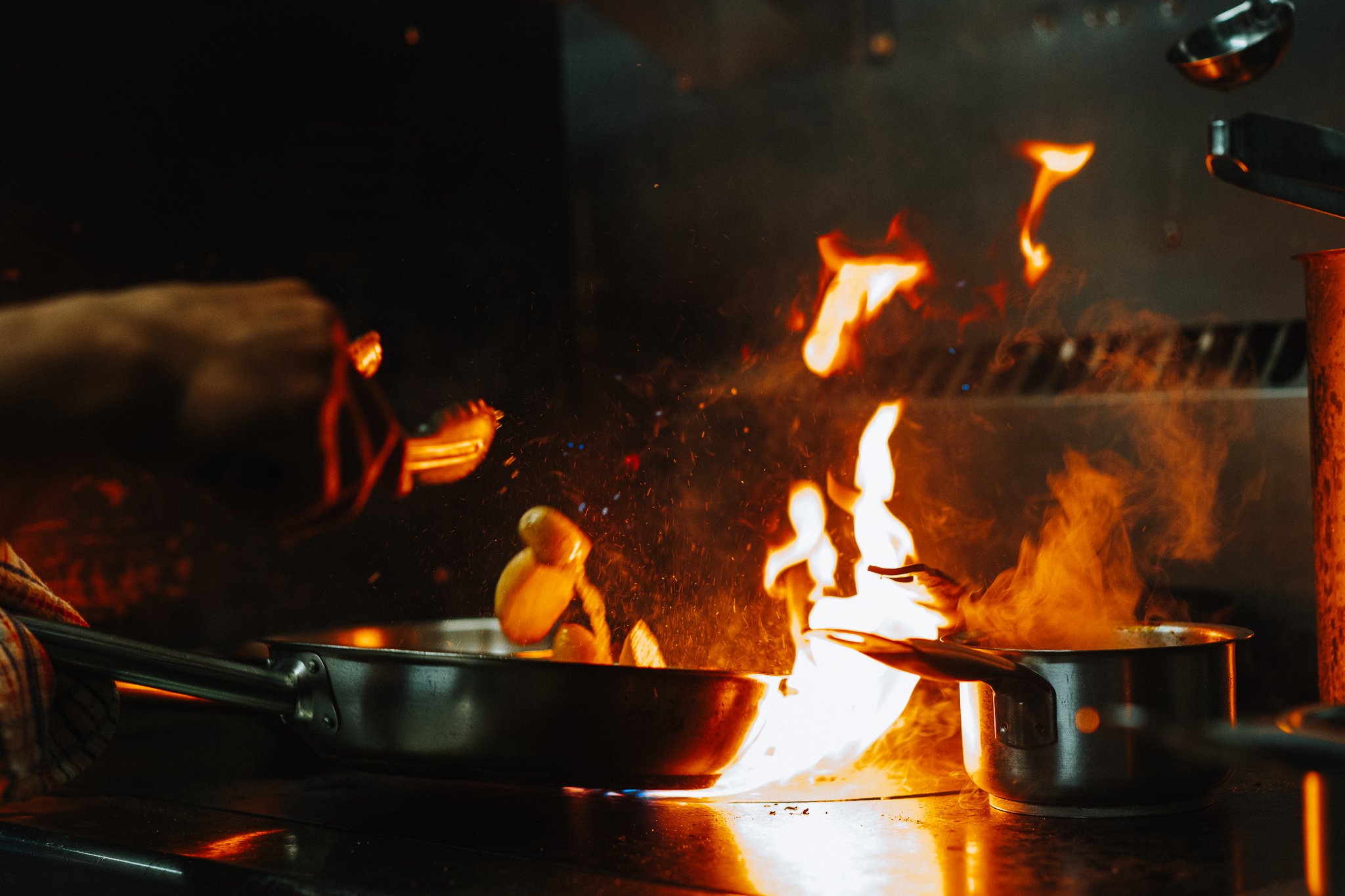
VERO PASTA + WINE
About Vero
Vero is an authentic Italian restaurant where culinary passion meets tradition. Guests can indulge in luscious, handcrafted pasta, paired perfectly with a selection of exquisite wines. Recently taken over by Pat, an experienced butcher with a deep appreciation for quality ingredients, Vero brings a taste of Italy to the table, creating an unforgettable dining experience. Buon Appetito!
Finals
Captured with the prime 55mm lens, this final image depicts the beginning of the pizza-making process. The shallow depth of field created through an aperture of f/2.8 creates a clear focal point within my composition, conventional to the genre of environmental portraiture. However, by utilizing a shutter speed of 1/50th, I can capture the motion of the molded pizza dough, as seen in the movement of the hands, and the flour particles. Additionally, by ensuring my shutter speed wasn't too low, e.g., 1/20th, I captured clear elements of the chef’s hand and arm, helping to emphasize the movement in the pizza dough. I opted to edit this image in post-production to be black and white due to the unpleasing colours in the switches behind the focal point; additionally, by de-saturating the image I am able further to highlight the movement as there are no obstructing colours that draw the viewers attention. Further, lowering my ISO to 400 ensured that I maximized the sharpness of the image and limited the raw grain in the image, despite adding post grain to create a visually appealing image.
Project Evaluation
In this project, I set out to capture a photographic series of a restaurant before and during dinner service. I decided to reach out to Vero Pasta & Wine in Frankston, an Italian restaurant that serves an array of authentic and seasonal Italian dishes. Having previously dined at Vero, I was already aware of its aesthetically pleasing environment, characterized by low-key lighting and traditional interior design. However, my research phase was limited in terms of food photography and the use of environmental photography codes and conventions in a restaurant setting, as this project was not my initial intention for this production experiment.
When I arrived at the restaurant at 4:00 pm, I was introduced to the chef of the night, who became the focal point for most of this project. I knew I wanted to capture the chef in his environment while also getting close-ups of food preparation. I started with various close-ups of him cutting vegetables but soon shifted to a more environmental focus. Using a prime 24mm lens initially, I found the tight space challenging for composition, lacking a focal point. This led me to switch back to my 55mm lens, opting to frame my focal point, a technical and symbolic code conventional to environmental portraiture. I framed my subject using stacked plates and foreground elements like containers and bottles. In the final image, I used the kitchen entrance, with the bar acting as a foreground element to create depth.
By utilizing a shallow depth of field of f/2.2 with the 55mm lens, I blurred the bar table and the midground elements of wine bottles and the fridge door to emphasize the chef. Turning off the main lights and leaving the kitchen lights on created a 'glowing' effect, aiding in framing the subject. This choice of vantage point highlighted elements in the middle ground, such as the wine bottles, showcasing the restaurant's selection and providing a glimpse of its interior design, capturing a sense of Italy and reflecting environmental portraiture conventions. I composed the image using the 'Rule of Thirds,' placing the subject and the entrance at the middle cross-section for visual engagement.
Although the raw image was aesthetically and visually pleasing, I enhanced it further in post-production using Adobe Lightroom. Masking the middle ground and lowering the exposure created a low-key lighting effect, while using the brush tool to highlight the kitchen increased the exposure, enhancing the glowing effect. Additional adjustments included straightening the image, slightly cropping the left side to ensure the wall filled the frame, and muting the shadows with the curve tool to make the highlights pop. Adding grain to the image created a vintage aesthetic, reflecting the traditional interior of the restaurant and the classic nature of Italian cuisine.

























































































